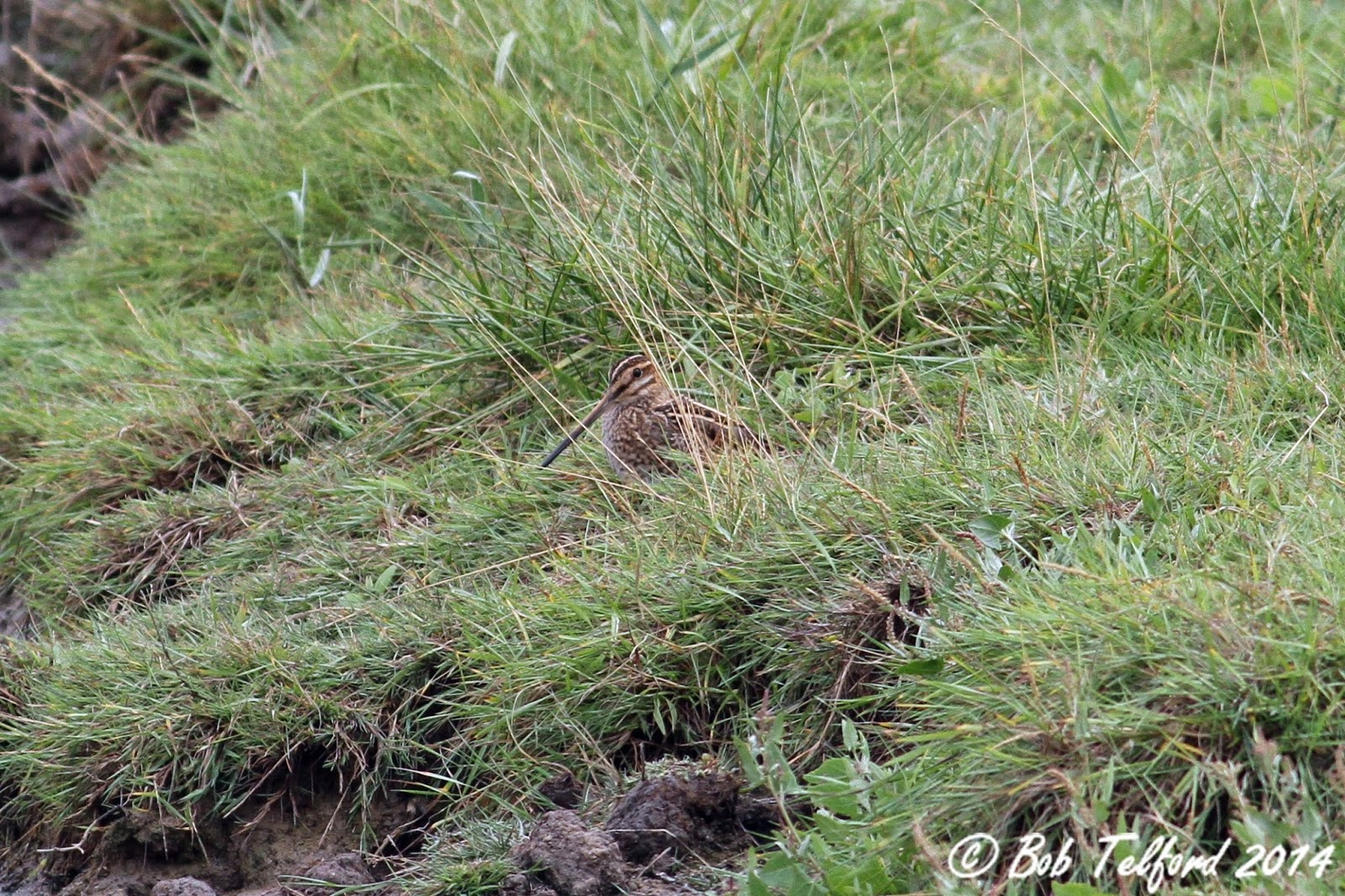Common Tern, juvenile Avocet and Black Headed Gull
A Little Egret, which had been fishing a long way off, flew over to have a preen and to share the island with the Terns, Black Headed Gulls and a Grey Heron
There was not much further action so I walked round to the other side of the pool and checked out the small concrete hide - it has Kingfisher perches nearby and we had seen a Kingfisher several times from the other hide though far too distant. A Cormorant was sat on the usual perch, with one of the many Coot in the background.
A juvenile Little Grebe came out and caught some weed
and then eventually cleaned itself up for a decent picture.
Next on the scene were a pair of Great Crested Grebe with a late brood of two very small chicks on one of the parents back.
Then one of the chicks got into the water for a swim and then they disappeared behind the island
so I didn't see any feeding. A Black Tailed Skimmer landed on one of the logs outside the hide.
Then I was given a special treat - a juvenile Water Rail popped out onto some reeds, had a little preen a nd then looked as if it was going to fly across teh channel. However, it turned around and scuttled back into the reeds.
Shortly afterwards, though, it did swim across the channel and I was ready for it.
The Cormorant hd benn off fishing and returned to his favourite seat.
Then the Greylag and Canada Geese which had been loitering on the middle islands took off.
By now it was time to walk round to the other side of the reserve and visit the scrapes. First in the viewfinder was one of quite a few Green Sandpiper. There were also a couple of Common Sandpipers but they wouldn't come close enough.
There were a few different birds about and it was possible to get several shots with different birds in, which always helps with ID a syou get a good perception of size difference. Here we have an Avocet, a Pied Wagtail, a Dunlin and a Little Ringed Plover.
A Dunlin and a Black Headed Gull.
A pair of Avocet
A Litle Ringed Plover
An Avocet and a 2 Common Snipe feeding
with a third Snipe in hiding.
Apparently the Avocet are late leaving, though one pair did have a late brood so that may be the reason. I expect them all to be gone by my next visit but it has been another successful year of breeding for them there.Another bird that has bred successfully at Uptin has been the Oystercatcher. This is a fairly late chick that hasn't quite fledged. Its parent flew across to one of the islands
and the little fella flapped his wings to try and follow, but didn't make it(-:).
Its parents kept calling and eventually the chick swam across, with one of the parents flying shotgun.
Eventually they all had a celebratory drink.
A Little Ringed Plover flew across
The Avocets are really intoolerant of most birds, regardless of size.
Here we have Black Headed Gull, Lapwing, Dunlin and Green Sandpiper
Along with the Black Headed Gull, I am reliably informed that the bird in the centre is a juvenile Mediterranean Gull
Just as I was about to leave half a dozen or so Curlew flew over and landed on the far shore.
Time ofr home at about 20:00 as the light was starting to go.



















































